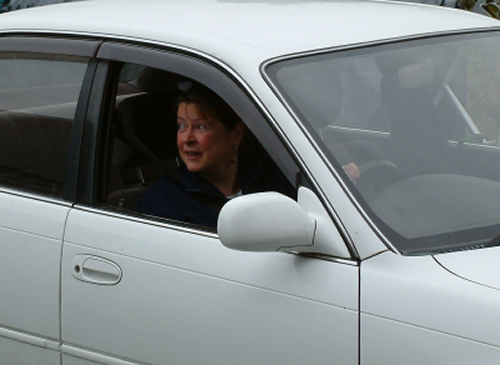Moving off
 To gain the maximum value from this section of i-Course Driving, you will need to go out in your car and practise moving off in the following situations - you will be prompted to do this in the project notes:
To gain the maximum value from this section of i-Course Driving, you will need to go out in your car and practise moving off in the following situations - you will be prompted to do this in the project notes:
- Level road
- Uphill
- Downhill
- At an angle from behind a parked vehicle
These notes do not go into the absolute detail that will be necessary when dealing with new drivers - for this reason we strongly recommend that you study the learners material at DriverActive to supplement this unit.
In addition to the full section about moving off at DriverActive (see below) you should also study the following page (all links are for the same page):
Studying the DriverActive information about moving off will help ensure that you meet the requirements yourself and also that you lay further foundations towards the third part of the examination (leaving all of your preparation for Part-Three until the P3 element of i-Course will reduce your chances of qualification).
Preparing to move
One of the factors marked during Part-Two of your exam is 'taking sake opportunities to proceed'; this applies to moving off in all situations as well as to some moving traffic situations. You will sometimes have to wait for a short time between selecting first gear and moving off. By resting your left hand on the hand brake after selecting the gear you will be prepared to release it at the first safe opportunity and thus reduce the risk of hesitancy (i.e., waiting when it is safe and correct to proceed).
Which gear?
Some drivers use second gear to move off when they are in the car alone. Although virtually all cars will move off in second gear it is not good driving practice to do so.
Moving off in second gear in normal circumstances results in excessive wear to the vehicle, particularly to the clutch. The only exceptions to the '1st gear rule' are downhill starts and starting on very slippery surfaces such as ice or mud.
If you are moving off downhill you can use a higher gear as gravity will help overcome the vehicles inertia and the appropriate speed for the gear is often reached by the time that the clutch is fully engaged. On snow or ice use the highest gear that is practicable to reduce wheel-spin.
Mirrors when moving off
 The important thing to remember here is that you must check your mirrors before moving, not as you start to move!
The important thing to remember here is that you must check your mirrors before moving, not as you start to move!
You can make further checks after the car has started to move but these must be extra checks.
It's a good idea to use all three mirrors – this will help to ensure that you are fully aware of what is happening all around.
Blinds spots when moving off
Checking blind-spots is one of the first things that learner drivers are taught by their instructors, however, many experienced drivers forget this basic rule and rely on mirrors alone. If you rely solely on mirrors (including 'blind-spot' mirrors) you run the risk of a collision with an unseen vehicle. The sequence below covers everything, in some situations you might have to do all the checks, in other situations just some of them - the important issue is to ensure that it is safe to move.
A good sequence for moving off from a left-hand kerb is:
-
Left blind-spot (pedestrians, kids on the footpath)
-
Left mirror (cyclists/skateboards/scooters on footpath)
-
Interior mirror (the road well behind)
- Road ahead
-
Right mirror (cyclists, motorcyclists, vehicles moving from the right)
-
Right blind-spot (immediate dangers to the right)
This process will be referred to at various points in i-Course and referred to on the videos. Reverse the procedure when moving out to the left from the right-hand side of the road.
Important: Read the notes about 'Looking too much' on this page at DriverActive
 Moving off smoothly
Moving off smoothly
When moving off, your car should never strain against the handbrake or move forward with a jerk. Imagine that your passenger (or advanced test examiner) is holding a cup of hot coffee. Make sure none is spilt!
The way to achieve a silky smooth start is to make sure that you use enough gas and hold the clutch momentarily as the car starts to move. Many diesel engine cars will move off without the need for gas - in fact a skilled driver should be able to move away in any car without touching the gas pedal* but using gas gives you more control over the clutch and enables you to move off promptly and smoothly.
*Moving off without using the gas pedal is a good exercise to develop your feel for the car, in particular the clutch, but not for use in normal driving.
Resting your left foot?
A fairly basic point but one which crops up a lot.
After moving off, make sure that you do not 'ride' the clutch between the first couple of gear changes. This is generally bad practice and will lead to excessive wear and tear (costs money!).
Thinking of teaching...
When practicing moving off, it's useful to think about routines that you will be teaching to your pupils.
A useful routine for teaching moving off is the POM routine - Prepare, Observe, Move – the process is often easier to learn and remember when split into three separate parts in this way.
Next: Study the information on the DriverActive web site (referenced above) and then move on to Step 3 - the blind spots project...